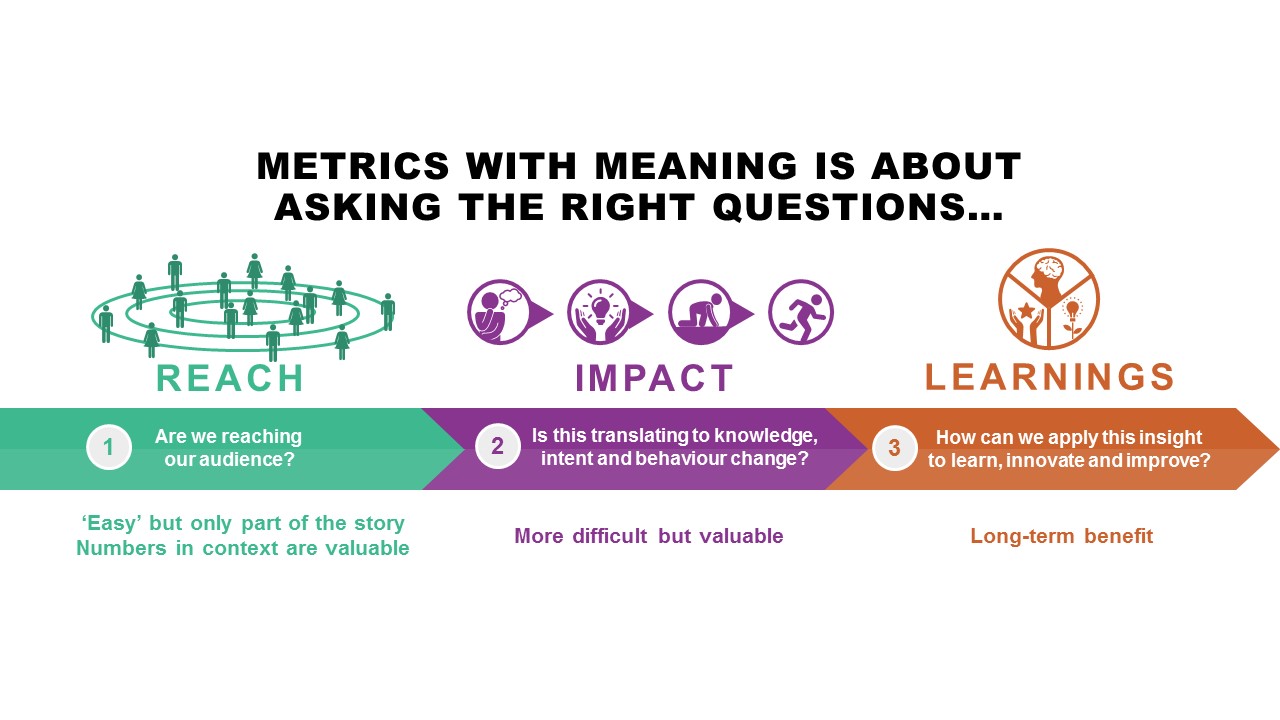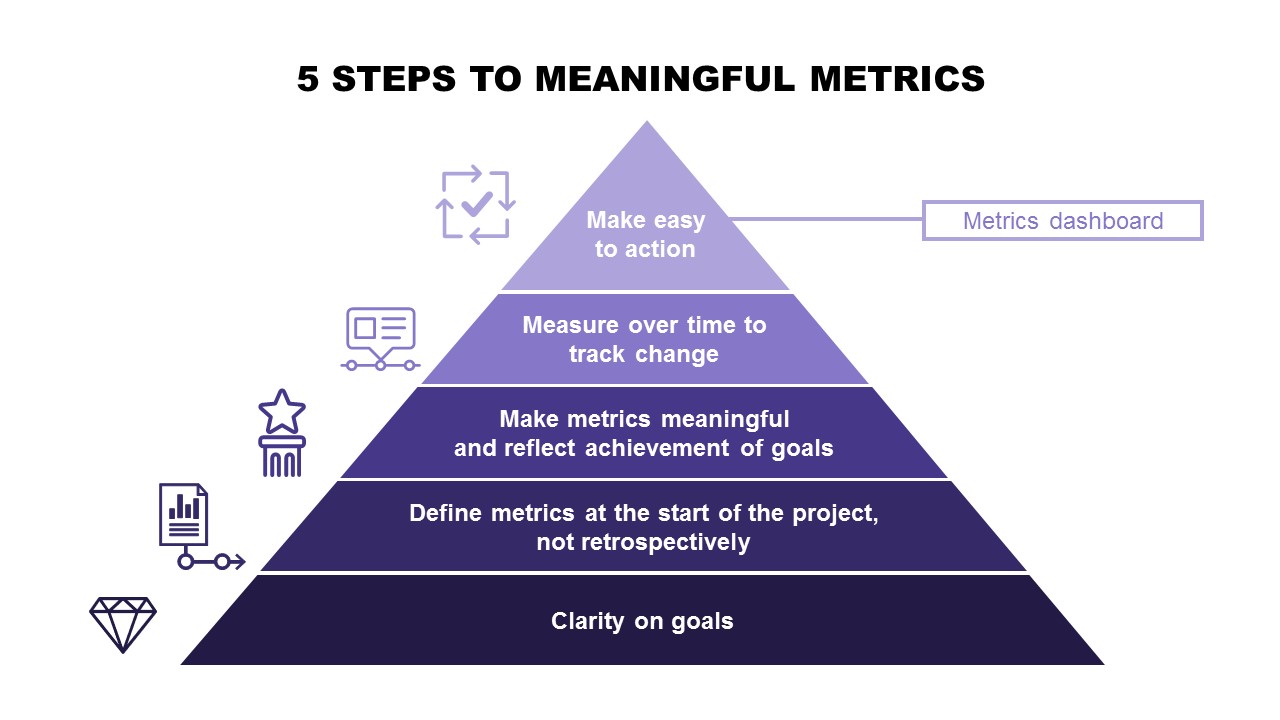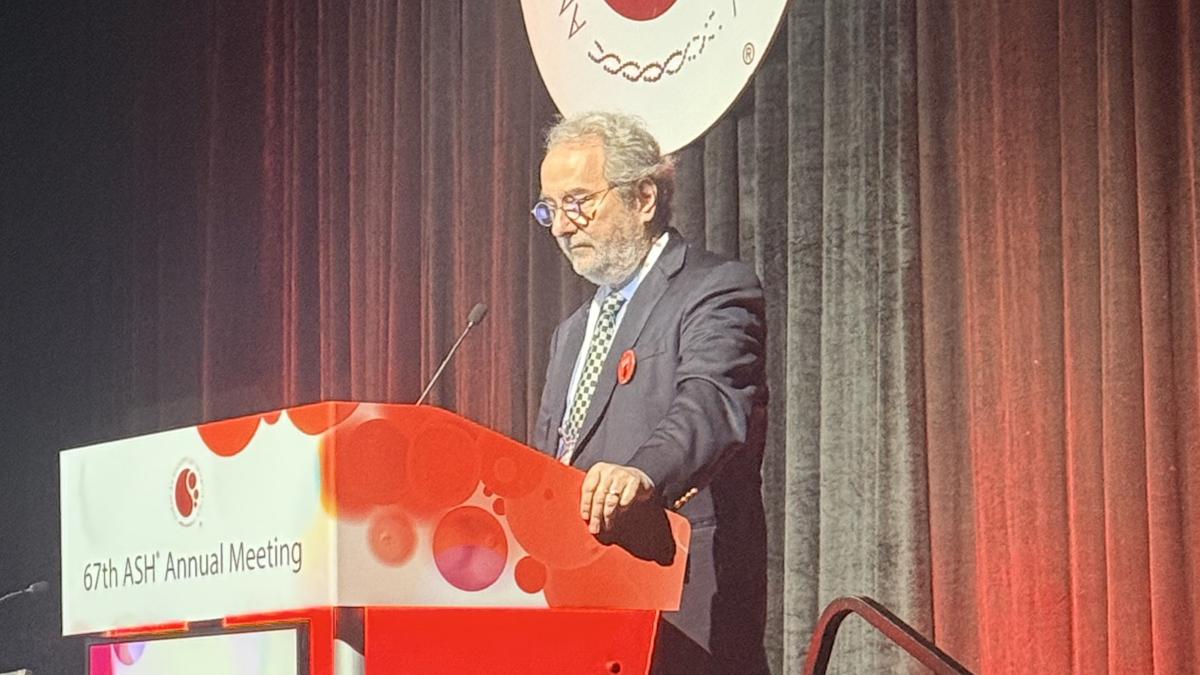Metrics to Meaning: mapping the path to better communications

Success is something we all want to achieve, but without specific measures in place it becomes an abstract concept. Measuring the success of health communications can be particularly difficult, yet there’s a real missed opportunity if the means to do so is not fully embedded in the design of a communication programme.
How else will we know if we have been successful? Some metrics have always been important within the communications arena; however, as medical affairs teams and other roles in the industry are being increasingly challenged to demonstrate value, there is a need to refine and expand our approach to deliver meaningful metrics that measure success and provide actionable learnings and insights.
What do we mean by metrics to meaning? Metrics should be actionable, drive learning and innovation cycles, and reflect impact against predefined objectives. This means going beyond measuring reach and usage of medical education and publications. While these key metrics are often easy to measure, by themselves they do not show impact on knowledge or change in behaviour, which are ultimately the goals of our communications. Can we change our focus towards these goals and, by extension, demonstrate value? Yes! Adopting this way of thinking unlocks a new perspective on communications and drives a more integrated approach, linking goals, tactics, content and metrics to provide transparency throughout a programme.
What do you want to achieve with your communication?
Let’s start with well-defined communication goals so that all stakeholders are clear on what success looks like, allowing you to design measures in line with the desired impact.
Push beyond simple measures like numbers of clicks to uncover the impact of those clicks: do you want to measure actual change in behaviour or, more simply, your targets’ understanding of the therapy area? By defining communication goals as target behaviours and identifying components of behaviour, it becomes easier to see what should be measured to understand the effectiveness of your communications. This is where the true value lies.
The Capability, Opportunity, Motivation – Behaviour (COM-B) framework provides a way of dissecting the key elements of a desired behaviour. For example, in a programme aiming to increase diagnosis of a rare disease, you may need to (1) assess increased knowledge of the appropriate diagnostics and awareness of the disease (‘Capability’) and (2) assess belief in the value of routine testing and intent to apply the knowledge gained (‘Motivation’), as well as measuring the increase in diagnosis directly (the ‘Behaviour’). Of course, reaching and engaging with healthcare professionals and patients is a critical first step, so remains important to assess, but ultimately it is the impact of this reach and engagement that matters.

Plan your metrics while you plan your activity
We’ve all been there: developing audience or feedback questionnaires right at the end of the project. However, knowing from the outset how you are going to determine if your communication ‘measured up’ allows you to integrate metrics into the design of the project and budget appropriately to cover the resources needed to perform the evaluation. This switch in thinking is an important step in creating effective metrics. After all, a metrics-first approach can in itself help refine the design of a programme to deliver better outcomes, as it ensures that every aspect of the programme will be considered in terms of its effectiveness to deliver the desired goal.
Knowing up front what your goals are will also allow you to put appropriate baseline metrics in place, for example to assess disease area knowledge, attitude and behaviour by market research or survey, so that it becomes possible to measure the impact of the programme over time. Embedding metrics from the start also gives you an efficient and targeted way to see early on when you are in danger of not meeting your goals, and allows you to adjust course and adapt, which ultimately leads to smarter communications.
Measure over time and evolve your thinking
Knowledge, attitude and behaviour change is not an overnight process; it’s essential to track key metrics over time. For example, a change in disease area lexicon is often a valuable metric for disease state education programmes and social listening approaches can be used to track adoption of specific language over a given period.
Dashboards and the importance of making metrics real
Gathering metrics is not enough, as we all know. Numerical measures of reach and impact should be complemented by interpretation so that the implications, meaning and recommendations arising from the metrics are clear. You need to be able to make it easy for all stakeholders to understand and act on the metrics. In practice, this means collating, summarising and presenting metrics in a simple-to-understand dashboard, with a plan to ensure that the metrics and recommendations are communicated. Many formats are possible, but for complex programmes, an interactive web-based dashboard provides the flexibility for the user to drill down to the level of information they need to make informed decisions based on the results of their metrics.
Predictive analytics and the emerging opportunity
What’s next after gathering our metrics? Analysing and reacting to the data is a second step, but using the data to generate proactive insights is the ‘holy grail’ objective. In the modern world of big data and artificial intelligence, it is now becoming possible to achieve this in real-time through predictive analytics. By using algorithms that combine analysis of rich data sources and behavioural personas, including learning preferences, styles and needs, predictive analytics can deliver hyperpersonalised learning journeys to achieve accelerated, more efficient learning.
Using this approach, it’s easier to deliver smarter communications: the most relevant content and formats tailored to the individual to maximise the opportunity for knowledge retention and, therefore, impactful behaviour change. It’s also less likely to be seen as the equivalent of ‘junk mail’ by the end user. This personalised educational approach offers many new opportunities for communications, providing a route to accurately determining your ongoing success and proactively adjusting your communications.

You wouldn’t retain a financial advisor if they didn’t have a plan in place to measure your investments or adjust your portfolio based on the market and your life situations as time progresses, so why wouldn’t you apply the same thinking to medical communications? Successful communications require planning and continued investment (of time and/or money) and by using meaningful metrics, planned at the start, to measure the level of success and where adjustments need to be made, you can maximise the impact of your story.
About the authors
 Lynda Chang is a scientific director at Complete HealthVizion, based in Glasgow, UK. Lynda has over 11 years’ experience in medical communications as well as 7 years’ experience in academic research. During that time she has developed extensive experience in leading communications tactics and understands the importance of telling compelling stories to bring data to life to positively affect treatment decisions across numerous therapy areas.
Lynda Chang is a scientific director at Complete HealthVizion, based in Glasgow, UK. Lynda has over 11 years’ experience in medical communications as well as 7 years’ experience in academic research. During that time she has developed extensive experience in leading communications tactics and understands the importance of telling compelling stories to bring data to life to positively affect treatment decisions across numerous therapy areas.
 Maria Vander Sande is an account director at Complete HealthVizion, based in Chicago, USA. She has 26 years’ experience in medical communications, US Congressional communications and public relations. Maria’s expertise is in strategic planning, development and delivery of communication activities across a spectrum of delivery platforms. She is skilled in collaborating with clients to develop solutions-oriented strategies that maximise impact.
Maria Vander Sande is an account director at Complete HealthVizion, based in Chicago, USA. She has 26 years’ experience in medical communications, US Congressional communications and public relations. Maria’s expertise is in strategic planning, development and delivery of communication activities across a spectrum of delivery platforms. She is skilled in collaborating with clients to develop solutions-oriented strategies that maximise impact.
Complete HealthVizion
![]()
Complete HealthVizion’s passion is to communicate complex, high-quality science effectively. To make a positive impact on people’s health, medical communications need to deliver credible, metrics-driven solutions that are able to embrace, engage, inspire and measure change. We have embedded the principles of behavioural science and metrics throughout our strategic approaches and tactical methodologies to maximise their effectiveness.
As part of the McCann Health family, Complete HealthVizion is part of the most connected network of health and wellness specialists in the world and we are united by one mission: to help our clients’ brands play a meaningful role in people’s lives.











